Can Texas — with its solid reputation for cattle, oil and Tex-Mex — add wine to its list of notorieties?
A vast majority of wines produced in America — an estimated 81 percent — come from California wineries, with Washington and Oregon trailing at a distant second and third according to USA Wine Ratings.
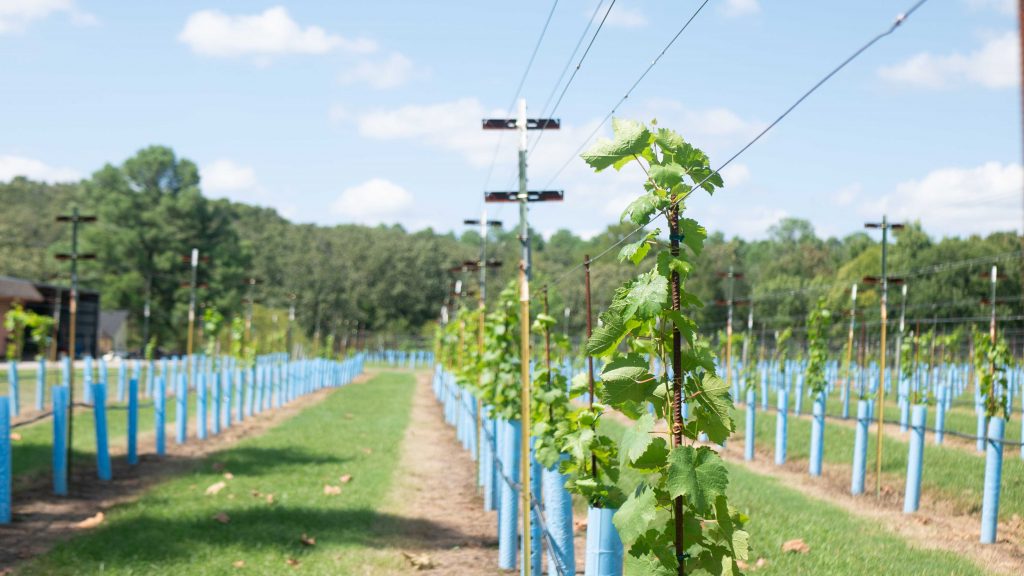
Texas, however, sits at fifth place in U.S. wine production, hosting around 400 wineries according to statistics from Texas Fine Wine. Most wines from the Lone Star State are grown in the High Plains (panhandle) region where adequate space, soil and weather conditions help vineyards thrive.
So where does East Texas fit in with our state’s wine industry? The Tyler Loop spoke with local winemakers to discover how East Texans create the best fruits of the vine with what they have.
The growing
Wine needs grapes, and grapes need plenty of maintenance and care to create a good wine.
Grape growing is easiest with consistent, fairly arid weather. Keeping vines in relatively dry conditions lowers the threat of fungi and diseases that thrive with excess moisture.
Unfortunately for local growers, Tyler can see around 50 inches of rain in a given year — well over the 10-25 inches preferred by most grape varieties. East Texas’ moist climate creates a great habitat for fungi like powdery mildew or blackrot that affect surface-watered crops.
Temperatures in East Texas remain warm enough for grapes for most of the year, but our proximity to the American southeast places area vineyards in range of multiple disease-carrying insects called glassy-winged sharpshooters.
If the grasshopper-like bugs can weather the winter season, they may spread a bacteria known as Xylella fastidiosa, or Pierce’s Disease, which can gradually scorch and kill vine crops.
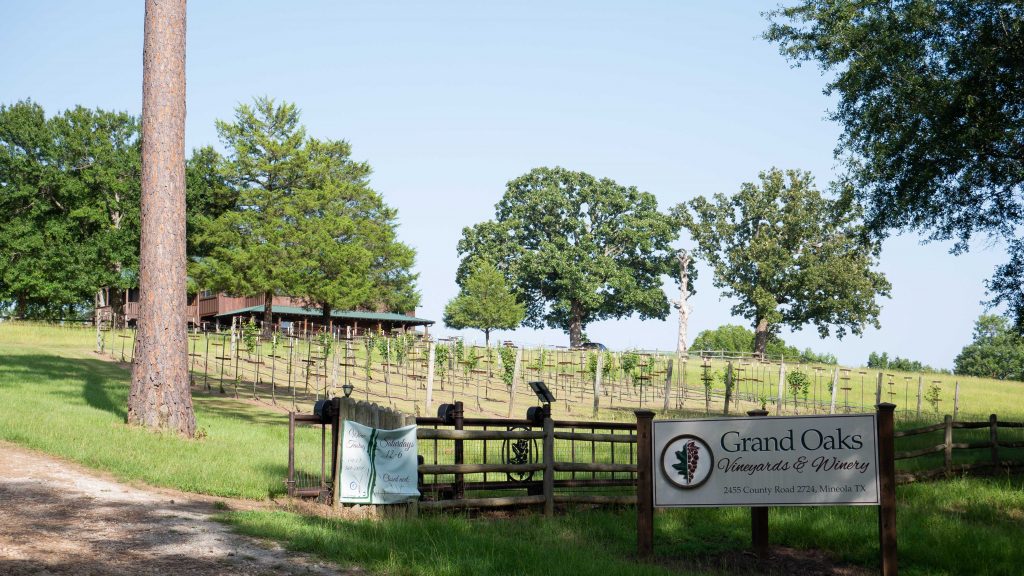
Despite the obstacles, East Texas vineyards have survived and thrived thanks to fairly recent technological revolutions in agriculture. In 1968, researchers from the University of Florida developed Blanc du Bois, a white wine grape much more resistant to Pierce’s disease than vinifera variety grapes, which make up a majority of the wine grapes on store shelves.
“[Blanc du Bois] has been a great resource for growers in East Texas and the Gulf Coast,” Andrew Snyder, Greyson College viticulture and enology director, said. “Because it can be made either sweet or dry… It’s very versatile, great at winning awards, and I think shows a lot of promise for East Texas.”
Blanc du Bois is just one grape out of a growing number of Pierce’s Disease-resistant varietals available to Texas farmers, like Black Spanish or Victoria Red grapes, and the list is growing. Some of the latest varietals have come from the University of California – Davis, where researchers announced the release of five new Pierce’s Disease-resistant grapes in 2019.
The making
Texas vineyards often harvest grapes around July-August. Following harvest, winemakers mechanically de-stem and crush grapes into a slurry called “must” that includes grape seeds and skins.
Red and white wines begin to develop their distinctive qualities during the next phase of fermentation. While grapes destined for white wines enter a press to filter off seeds and skins, juice for red wine will rest in vats with skins included, giving the wine its deep colors and tastes.
Winemakers add yeast, sugar and nutrients to the juice as it rests for seven to 10 days to create fermentation. The yeast will eat up sugar molecules and break them down into ethanol, the chemical that gives alcoholic drinks their intoxifying effects.
If the yeast aren’t happy with the given nutrients or sugar levels, they could create undesirable byproducts like sulfur, so the resting wine is tested for acidity, sugar content and alcohol levels periodically.
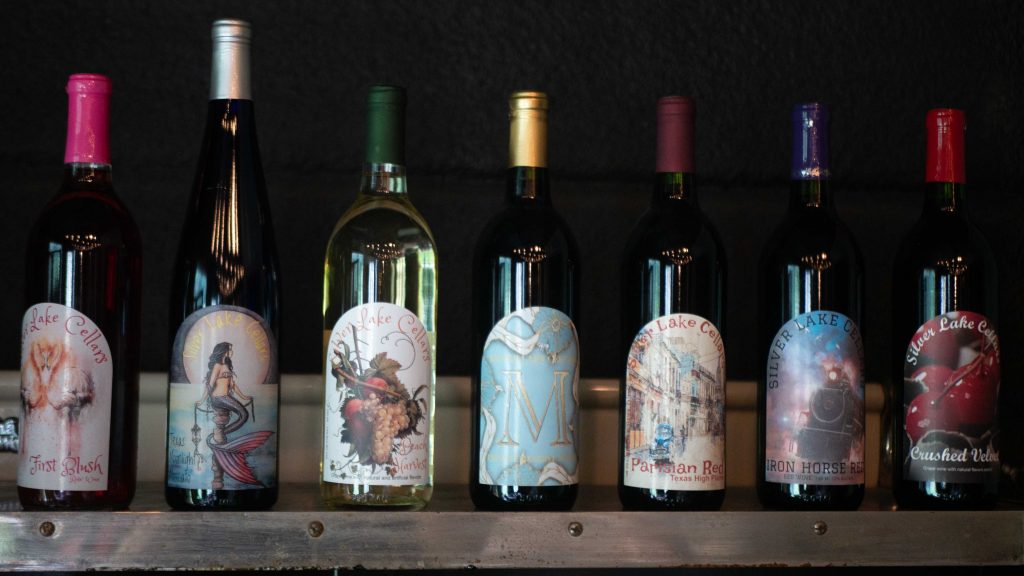
Once fermented, the wine needs to be separated from lingering solids in a process called racking. Solids naturally sink to the bottom of wine vats during fermentation, so a winemaker will separate the clear product on top into a different container.
The wine may undergo racking three or more times, but solids could still appear within the wine in certain conditions at this point. Winemakers will add substances known as “fining agents” to rid the wine of lingering particles that racking alone might miss.
“We will use a substance called bentonite,” Snyder said. “Basically, it’s a clay. And the positive charged ions in it attract negatively charged ions in the wine and then that helps facilitate sediment falling out of the wine.”
Bentonite isn’t the only fining agent out there, but the other kinds might surprise you. Chitosan is made from microscopic sea life and shells, while isinglass is made from the swim bladders of fish.
The additives ensure that a bottle of wine can endure different conditions, like warmer temperatures, for example, without any more particles appearing in the liquid.
Red wines will often go through a flavoring process called oaking, which, as the name implies, involves exposing the wine to oak wood flavors. The winemaker might keep reds in oak barrels, incorporate oak wood chips or charred oak powders to give their immature wine a more full-bodied flavor and complexity.
Three taste-worthy wineries
One of the best ways to learn more about East Texas wine is to visit a local winery or wine festival and tasting for yourself. The Tyler Loop spoke with winemakers at three East Texas wineries to learn more about their stories, but our region is host to dozens of other vineyards and wineries worthy of a visit.
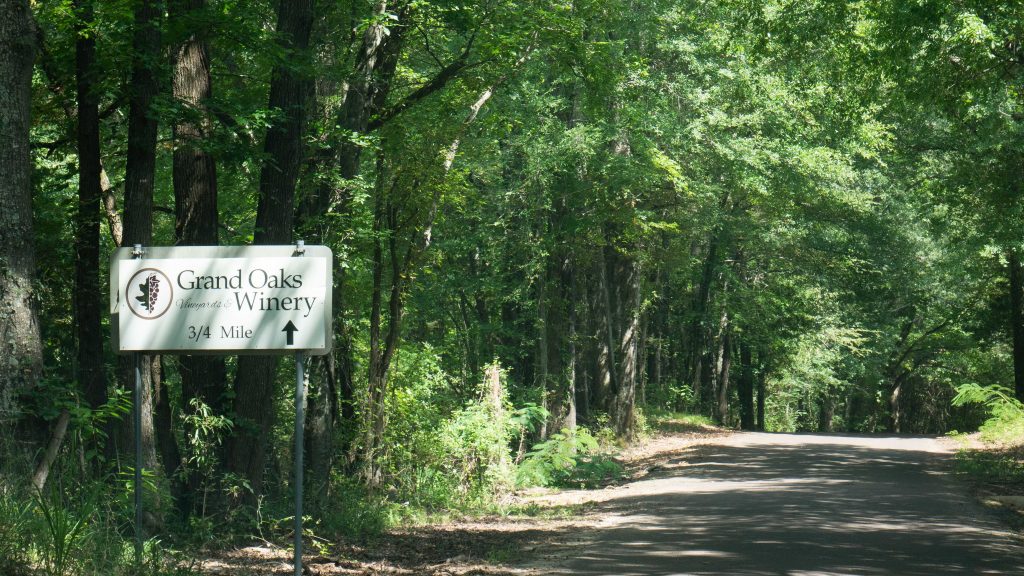
When Carroll and Martha McHenry decided to leave their corporate careers in Dallas-Fort Worth, they wanted to move on to something they love. Naturally, they chose to start a winery in Mineola.
The couple planted Grand Oaks Vineyards and Winery’s first vines in 2007, just to experiment. After a successful initial crop, the McHenrys selected seven kinds of vines to grow commercially, which bore their first wines in 2014.
“We opened this in 2014 and have found a very receptive community for wine drinking,” Martha McHenry said. “A lot of our customers come from Dallas or Shreveport, passing through. They told us that the East Texas wine drinking group only likes sweet wines. Not true.”
Visitors can currently taste and purchase three wines at Grand Oaks: their Estate Reserve Tempranillo, Estate Reserve Mourvedre and a white wine named Laurena Blanc.
Both reserve wines are barrel-aged reds from 2016 with medium to full-bodied flavor. Laurena Blanc, named after the McHenry’s middle daughter Lauren, is a slightly sweet mix of French Chenin Blanc grapes and a dash of East Texas favorite Blanc du Bois.
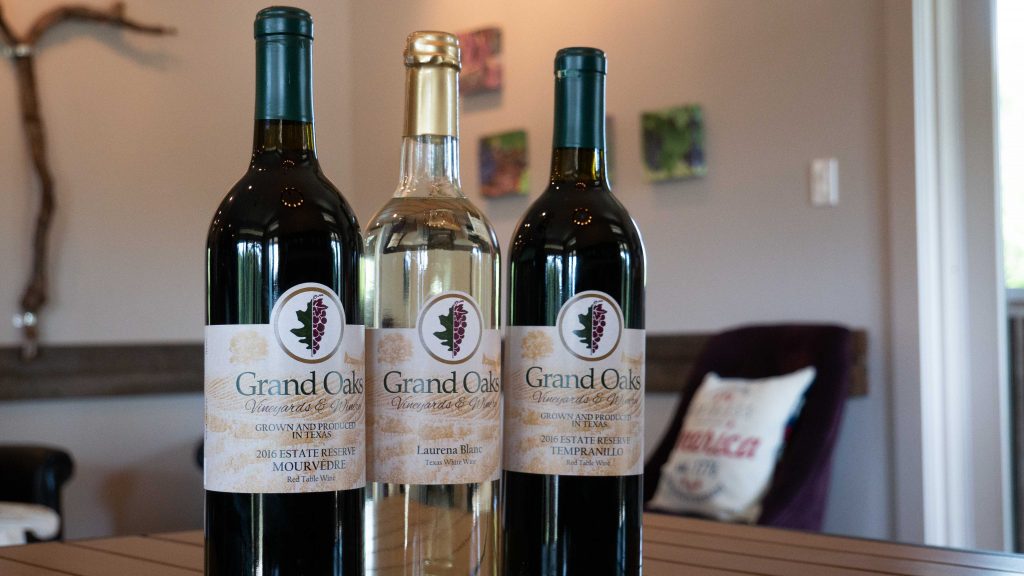
Grand Oaks did offer a larger wine menu in years prior, but unfortunate weather events like Winter Storm Uri and flooding in 2018 and 2019 lowered harvest yields. Vines take at least three years to fully mature enough for good harvests, so the previous years have set back the McHenry’s current wine supply.
“Until we get a harvest, we can go into the bulk wine market,” Martha McHenry said. “We could go into the vine market and get two-year-old vines so that we only have to wait a year. We would plant them in the spring and not harvest that year, but the next year.”
Grand Oaks sells their remaining wine from an on-site tasting room that operates every Saturday. Even if wine is in short supply, Grand Oaks has served as an event space for galas, weddings and athletic events.
Kevin and Debbie Eberhart, owners of Silver Lake Cellars Winery in Silver Lake, know their clientele.
The first weekend of each month brings thousands of visitors to Canton for the city’s famous First Monday Trade Days. Just one mile away from the main Trade Days pavilion lies The Mountain, a late-night destination with restaurants, lodging and shops patterned after an 1800s Canton.
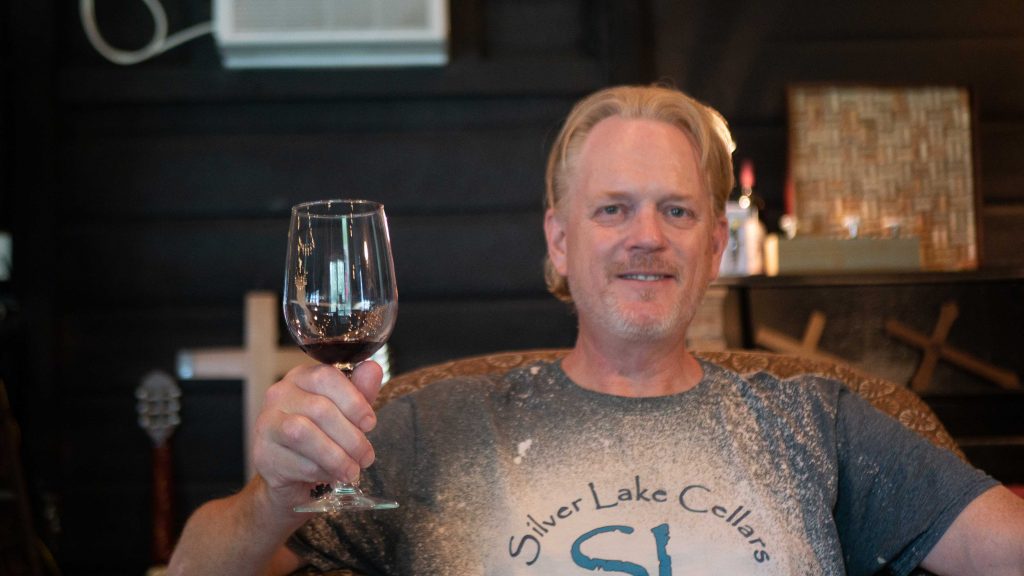
And when visitors to The Mountain want a drink, they can taste one of Silver Lake’s several locally-made wines or an exoticly-flavored wine slushy at their Canton storefront. Both their Canton and Silver Lake stores feature eclectic furniture, artsy T-shirts and local handmade goods fit for a quirky First Monday crowd.
“Canton is a great sounding board when it comes to experimenting,” Kevin Eberhart said.
In fact, the couple’s wine adventure started from a mere experiment. Kevin Eberhart gifted Debbie a home winemaking kit with Chardonnay juice in 2013, and with a little aging, the wine placed second in a Texas homebrewing contest.
Now the couple produce nine different wines, like their award-winning Texas Moonlight moscato, or the indulgent Crushed Velvet red wine infused with chocolate and almond flavors.
“Our whole thought process here is to have a palette for everybody,” Kevin Eberhart said. “We usually have seven to nine wines running: four or five reds, four to five whites. Some are going to be dry. Some are going to be sweet. Some will be kind of off the wall.”
Silver Lake sources their grapes from other East Texas vineyards and brews the wine in-house with some production help from other wineries. Several rows of maturing grapevines outside their Silver Lake location may become wines in the future, but like many other area vineyards, weather and pests present a challenge to their maturing vines.
In the meantime, the Silver Lake vineyard also hosts a myriad of events like group painting sessions or gender reveal parties. Kevin Eberhart said their customers often inspire impromptu events, and they encourage it.
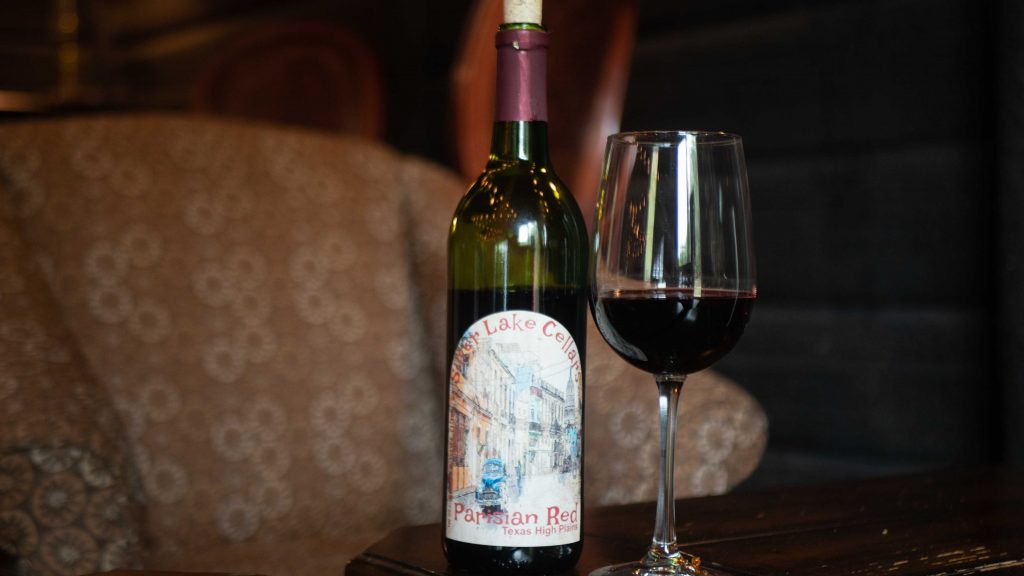
“It’s really important to us for people to have a good experience,” Kevin Eberhart said. “It’s not crazy for us to pull up the TV and set up a karaoke night. Sometimes we’ll have bands playing. I’ve got a couple guitars and piano back here. People are welcome to sit down and entertain or do their thing.”
Making wine takes a great deal of specialized knowledge and training to master. Not just anyone could jump headfirst into the industry and expect to succeed immediately.
Well, unless you’re Don Clark, owner of Valle della Pace Winery in Garden Valley.
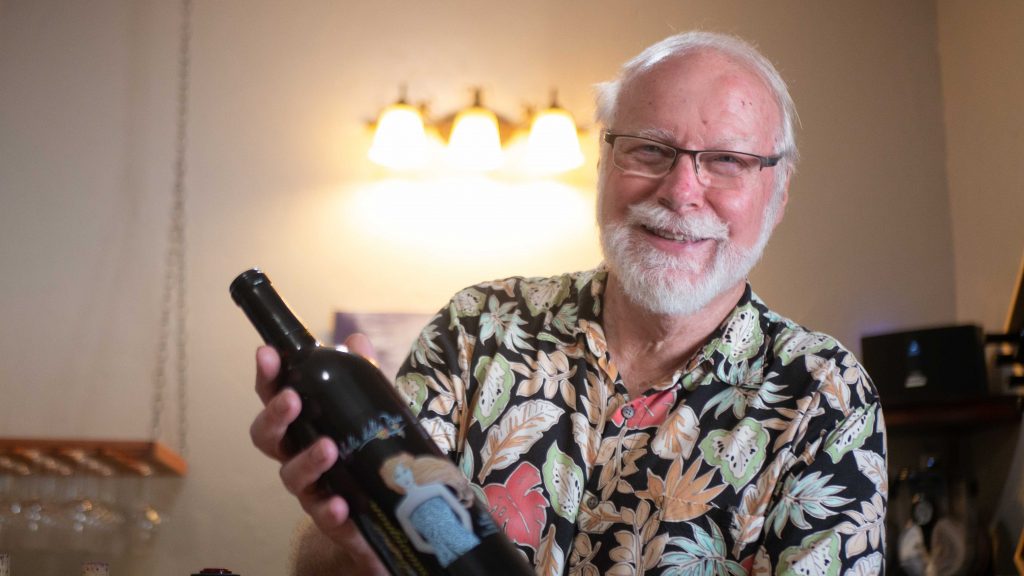
“We started harvesting grapes in 2014 and made our first wine, which was our Blanc du Bois we named Blondie,” Clark said. “We entered it into an international wine competition and I got a gold medal off of it to start.”
A gold medal result on the first try might seem unexpected, but Clark came into winemaking more prepared than most. Before deciding to devote his property to grapevines in 2011, Clark worked in biotechnology and holds a doctorate in chemistry.
The science behind wine seemed trivial compared to working in biotechnology, he said.
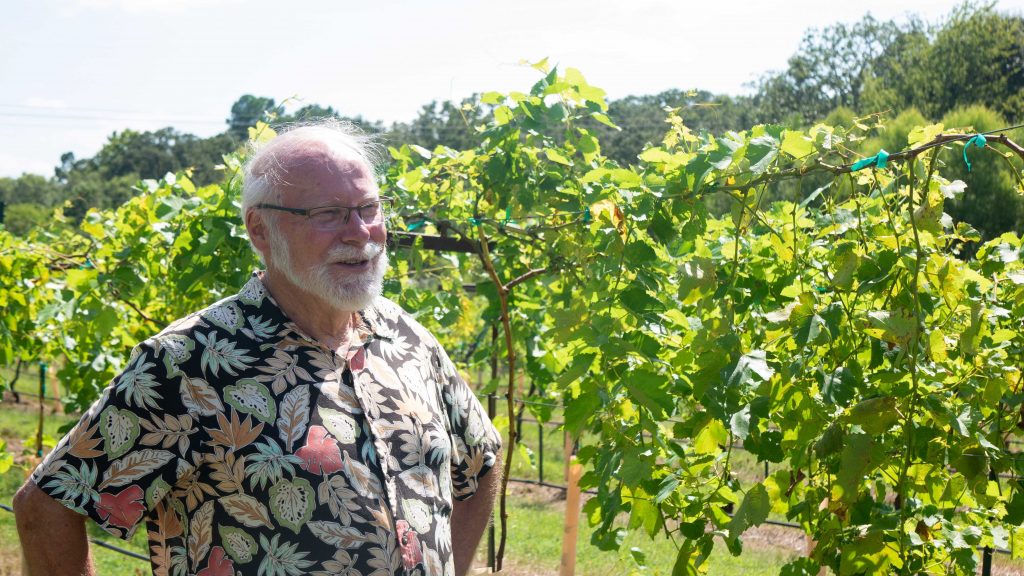
While the brewing process came easy, Clark couldn’t do everything alone. He consulted other wine experts to help build Valle della Pace’s vineyard operations, which can produce enough wine for three 1000-gallon tanks, or around 5,000 bottles of wine.
The winery brews 12 different wines of varying sweetness levels, from several dry reds to a sweet blend of Blanc du Bois and peach flavors. Clark can’t pick out a favorite, but appreciates potential food pairings with each wine.
“I discovered that our Albarino, which is the Spanish white – on first taste you say, ‘Wow, this is pretty strong.’ It’s kind of acidic, and it has a lot of minerality to it. But with gumbo, it’s out of this world.”
Valle della Pace hosts events at their vineyard and tasting room with food and live music from local artists. Many of the winery’s events allow patrons to “bring your own meat” to cook and enjoy with extra sides provided by Valle della Pace.
Clark said he has plans to expand Valle della Pace’s facilities in the future. Those expansions could bring a commercial kitchen and more winery facilities with air conditioning
“I think we’re unique because we do a lot of testing,” Clark said. “At all stages, I’m very meticulous, since I’m a scientist… We don’t bottle something until I’m satisfied.”
Love what you're seeing in our posts? Help power our local, nonprofit journalism platform — from in-depth reads, to freelance training, to COVID Stories videos, to intimate portraits of East Texans through storytelling.
Our readers have told us they want to better understand this place we all call home, from Tyler's north-south divide to our city's changing demographics. What systemic issues need attention? What are are greatest concerns and hopes? What matters most to Tylerites and East Texans?
Help us create more informed, more connected, more engaged Tyler. Help us continue providing no paywall, free access posts. Become a member today. Your $15/month contribution drives our work.







